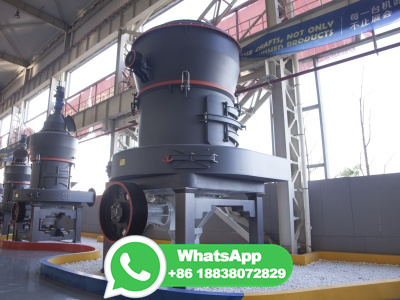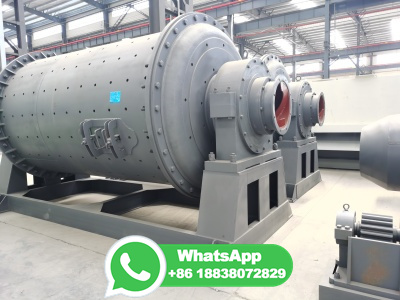
Overall, this study offers a viable approach to converting solid waste into valuable resources while simultaneously addressing the environmental concerns associated with oil shale residues. ... the coaltoliquid fuel (CTL) process is competitive. For a high carbon price, the biomasstoliquid fuel (BTL) technology expands more rapidly. The ...
WhatsApp: +86 18203695377
He explains that a liquid propulsion rocket engine uses fuel and an oxidizer, which reacts with the fuel. ... is using his rocket knowhow to improve this 200yearold process. Converting the energy stored in coal is less damaging with a gasifier, because it doesn't pump harmful gases into the atmosphere, uses less water, and creates less ...
WhatsApp: +86 18203695377
Coaltoliquids (CTL) The conversion of coal to liquid fuels and/or chemicals Coprocessing (of coal) The simultaneous conversion of coal and waste carbonaceous feedstocks such as petroleumbased residual oil or tar, plastics, or rubbers via oncethrough direct liquefaction into liquid, solid, and gaseous hydrocarbonaceous materials intended ...
WhatsApp: +86 18203695377
Coal liquefaction is a process of converting coal into liquid hydrocarbons: liquid fuels and petrochemicals. This process is often known as "Coal to X" or "Carbon to X", where X can be many different hydrocarbonbased products. However, the most comm .. View the full answer. Previous question Next question.
WhatsApp: +86 18203695377
Simply, the coal liquefaction process is a process of converting solid coal into a liquid product, at an enough high Hydrogen temperature and pressure the aid of a catalyst and solvent media.
WhatsApp: +86 18203695377
Liquid fuel obtained via pyrolysis process is considered as the best alternative, but the fuel has to meet the government standards prior to commercial usage. Investigations on the fabrication of novel catalysts, promoters and support materials to enhance the selectivity, productivity and activity with no or little effects on coking, sintering ...
WhatsApp: +86 18203695377
CoaltoLiquids. CoaltoLiquids (CTL) is a process of converting coal to fuels such as diesel or gas. For diesel, the process involves first building a plant to convert coal to gas and then another plant to covert the gas to a liquid. The resultant liquid fuel is known as synthetic fuel or synfuel. Synfuels are used as an alternative to oil ...
WhatsApp: +86 18203695377
Indirect liquefaction processes require first gasifying the solid feedstocks into a syngas. Therefore, while direct coal liquefaction (DCL) takes coal directly into a liquid phase, indirect coal liquefaction (ICL) consists of two major steps: (a) gasification to produce a synthesis gas (syngas); and (b) conversion of the carbon monoxide (CO) and hydrogen (H 2) in the syngas to a range of ...
WhatsApp: +86 18203695377
The first, indirect coal liquefaction (ICL), uses the same FischerTropsch process as gastoliquids fuels. Of course, processing requires an additional step to convert the solid coal into a gas that can feed the FT reaction. Solid coal is crushed, and then exposed to high temperature and high pressure, along with steam and oxygen, which react ...
WhatsApp: +86 18203695377
Unlike coalfired power plants, where coal's combustion emits pollutants, CTL fuels are as clean or cleaner at their end use as today's liquid fuels. But the process by which the fuels are made can be very carbonintensive — in fact, more so than any other fuel — and that has many people concerned.
WhatsApp: +86 18203695377
Their FischerTropsch (FT) process could now help countries and companies that want to phase out fossil fuels: if coal can be turned into liquid fuels, then, theoretically, greener alternatives ...
WhatsApp: +86 18203695377
Gasification While the goal of combustion is to produce the maximum amount of heat possible by oxidizing all the combustible material, the goal of gasification is to convert most of the combustible solids into combustible gases such as carbon monoxide, hydrogen, and methane. Gasification reactions
WhatsApp: +86 18203695377
Coal liquefaction is a process of converting coal into liquid hydrocarbons: liquid fuels and process is often known as "Coal to X" or "Carbon to X", where X can be many different hydrocarbonbased products. However, the most common process chain is "Coal to Liquid Fuels" (CTL).
WhatsApp: +86 18203695377
But there are two flaws with turning coal into oil, beyond its cost. First, it takes a lot of energy to loosen up the carbon bonds in coal. Second, all that energy use results in the emission of a ...
WhatsApp: +86 18203695377
A process called biosolubilization utilizes the role of microorganisms to convert solid coal into liquid fuel/chemical compounds while still producing environmentally friendly by products. Furthermore, lignite contains simple aromatic compounds which is a favourable condition to optimize the process.
WhatsApp: +86 18203695377
Coaltoliquids (CTL): The conversion of coal to liquid fuels and/or chemicals. Coprocessing (of coal): The simultaneous conversion of coal and waste carbonaceous feedstocks such as petroleumbased residual oil or tar, plastics, or rubbers via oncethrough direct liquefaction into liquid, solid, and gaseous hydrocarbonaceous materials intended primarily for use as fuel
WhatsApp: +86 18203695377
converting coal into liquid fuel. To implement coal use, CO 2 emissions must be mitigated. CO 2 footprint of CBTL processes can be lessened by mixing biomass or municipal solid waste with coal and by capturing and sequestering CO 2. By design, most CO 2 generated by CBTL plants must be captured for the plant to operate properly.
WhatsApp: +86 18203695377
The FischerTropsch process (or FischerTropsch Synthesis) is a set of chemical reactions that convert a mixture of carbon monoxide and hydrogen into liquid process, a key component of gas to liquids technology, produces a petroleum substitute, typically from coal, natural gas, or biomass for use as synthetic lubrication oil and as synthetic fuel. [1]
WhatsApp: +86 18203695377
Liquid fuels are overwhelmingly derived from increasingly scarce crude oil, and it would thus be beneficial to make liquid fuels from other sources, such as coal and biomass (1, 2). One reason why liquid transportation fuels are derived from petroleum instead of coal is that converting coal into liquids is much more energyintensive.
WhatsApp: +86 18203695377
article{osti_869196, title = {Process for converting coal into liquid fuel and metallurgical coke}, author = {Wolfe, Richard A and Im, Chang J and Wright, Robert E}, abstractNote = {A method of recovering coal liquids and producing metallurgical coke utilizes low ash, low sulfur coal as a parent for a coal char formed by pyrolysis with a volatile content of less than 8%.
WhatsApp: +86 18203695377
It's theoretically possible that such a process could be economic. As a simple example, you might convert two BTUs of coal into one BTU of liquid fuel if the liquid fuel was valued at three ...
WhatsApp: +86 18203695377
CTL (coal to liquid) is... The process of converting solid coal into liquid fuel. Energy intensity is... The energy use per unit of gross domestic product. According to the Hubbert curve, we will hit peak oil when. Half of the world's oil supply has been used. Study with Quizlet and memorize flashcards containing terms like What is the most ...
WhatsApp: +86 18203695377
Breakthrough in CO2 to Fuel Conversion. Now, researchers at MIT and Harvard University have developed an efficient process that can convert carbon dioxide into formate, a liquid or solid material that can be used like hydrogen or methanol to power a fuel cell and generate electricity. Potassium or sodium formate, already produced at industrial scales and commonly used as a deicer for roads ...
WhatsApp: +86 18203695377
Direct coal liquefaction residue (DCLR) is a byproduct of coaltoliquid technology when raw coal is converted into liquid fuel, which is harmful to the ecological environment and human can be developed into a road asphalt modifier via different techniques, that can improve and enhance asphalt performance. In this paper, the global research status of DCLR in asphalt pavement is ...
WhatsApp: +86 18203695377
's plant in Secunda still applies their method of converting solid coal into liquid fuel on a larger scale than anywhere else in the world: each day, more than 25 million litres of diesel are produced by the coal liquefaction facility. Over the course of nearly 70 years, has manufactured more than 300 billion litres of fuel.
WhatsApp: +86 18203695377
Direct hydroliquefaction, which can break down the molecular structure of coals and donate hydrogen [19], [20], [21], is an effective way of converting solid coals into liquid fuels and chemicals. Lowrank coals [22], [23], [24] have various characteristics, including high moisture content, high oxygen content, low calorific value, and ...
WhatsApp: +86 18203695377
The approach directly converts the greenhouse gas into formate, a solid fuel that can be stored indefinitely and could be used to heat homes or power industries. ... efficient process that can convert carbon dioxide into formate, a liquid or solid material that can be used like hydrogen or methanol to power a fuel cell and generate electricity ...
WhatsApp: +86 18203695377